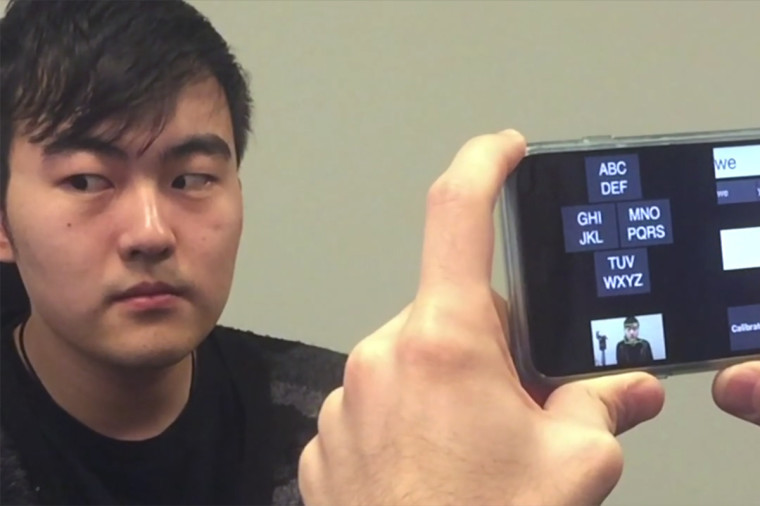Microsoft has created an app for patients suffering from ALS, GazeSpeak, to help them communicate with their eyes.

Amyotrophic lateral sclerosis (ALS) or Lou Gehrig's disease is a nervous system disease that attacks nerve cells, called neurons, in your brain and spinal cord. Sometimes, eyes become their only tool to communicate. GazeSpeak, running on listener's device, predicts what the person is trying to say by registering their eye movement. It divides alphabets into a grid of four boxes, visible to the ALS sufferer via a sticker on the back of the device, and registers response corresponding to them looking up, left, right, and down.
Xiaoyi Zhang, who developed GazeSpeak whilst he was an intern at Microsoft Research, explained:
"For example, to say the word ‘task’ they first look down to select the group containing ‘t’, then up to select the group containing ‘a’, and so on,"
GazeSpeak then uses AI and predictive texting to foretell the word they were going for. Of the four options that the app comes up with, the most likely one is read aloud.
Meredith Morris of Microsoft Research said:
“We’re using computer vision to recognize the eye gestures, and AI to do the word prediction,”
Compared to the method generally used to communicate with patients suffering from the disease, writing letters on a board to track the person's eye movement, GazeSpeak came ahead on all counts taking an average of 78 seconds as opposed to the former method's 123 seconds to complete a sentence. One person got a test sentence predicted in 62 seconds and added that real-world usage will be quicker on the count of the interpreters who usually interact with the patients.
The company has been a strong supporter of the ALS Ice Bucket Challenge in the past and has also consistently added features for the disabled in many of its products. The Redmond giant quite memorably featured Saqib Sheikh and the Seeing AI to help the blind experience the world in a new way at Build last year.
Microsoft will, reportedly, launch the app for iOS devices before the Conference on Human Factors in Computing Systems to be held in May with its source code freely available.
Source: New Scientist via MSPoweruser
_small.jpg)















